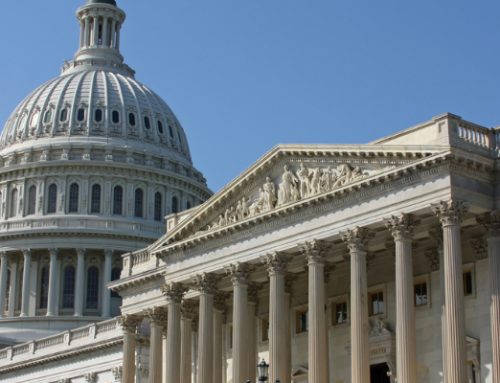Not-for-profit organizations have been a source of hope and resources for the communities they serve, but many are still struggling with the effects of COVID-19. On December 27, 2020 the latest round of stimulus relief was signed into law and allocated $900 billion to ongoing COVID-19 relief measures, many of which stand to benefit the not-for-profit sector.
Among other notable provisions, the Consolidated Appropriations Act of 2021 opened the Paycheck Protection Program for second loans, expanded PPP eligibility to 501(c)6 organizations, and made changes to the tax treatment of PPP loan forgiveness deductibility. The Act also extends other tax incentives from earlier COVID-19 legislation, like unemployment insurance coverage and the above-the-line charitable deduction, past December 31, 2020.
Funding sources for nonprofit organizations in the Consolidated Appropriations Act include the following:
Renewed PPP Loans
The Act provides an additional $284 billion to the Paycheck Protection Program (PPP) for both new and repeat borrowers. Organizations that take out a second PPP loan must meet these requirements:
- 300 or fewer employees
- 25 percent reduction in gross revenue in any quarter in 2020 compared to the same quarter in 2019; gross receipts are defined under Section 6033 of IRC.
The maximum loan amount has been reduced to $2 million.
More 501(c)6 organizations are now permitted to take out PPP loans, provided they meet the following qualifications:
- 300 or fewer employees (an increase from 150)
- Lobbying receipts of 15 percent or less (an increase from 10 percent)
- Lobbying activities of 15 percent or less (an increase from 10 percent)
- Lobbying costs of $1 million or less in the most recent taxable year that ended prior to February 15, 2020
Additionally, if the organization used PPP funds already, it must have either spent the funds in full or plan to. Other requirements of earlier PPP loans still apply, including demonstrating economic need and the maximum 24-week covered period; though, in the new round, organizations have more flexibility and can choose the length of their covered period, provided it does not exceed the 24-week maximum.
PPP loan forgiveness has also been expanded and simplified. Loans of $150,000 or less will benefit from a streamlined, one-page loan forgiveness application that requires them to self-certify loan compliance. Loan forgiveness now includes PPE, covered supplier costs, and modifications to nonprofit facilities due to COVID-19. For-profit entities will now benefit from full deductibility of certain PPP expenses, such as rent and utilities.
Emergency EIDL advances will also be included in PPP loan forgiveness, unlike the previous law that required EIDL advances to be repaid.
New EIDL Advances
Another $20 billion has been allocated to Economic Injury Disaster Loan (EIDL) funds. This amount covers organizations that:
- Employ fewer than 300 employees,
- Have losses of at least 30 percent compared to 2019, and
- Are in a low-income community.
Emergency EIDL grants are renewed through December 31, 2021 and as noted above, EIDL advances are now fully forgivable, provided funds are spent according to program requirements.
Save Our Stages
$15 billion has been set aside for a new fund designed to help struggling performance venues, independent movie theaters, and cultural institutions. The Save Our Stages Act was first introduced in the summer of 2020 after widespread lobbying in the entertainment industry. Organizations may apply for grants of up to $10 million.
Coronavirus Relief Fund
The part of the CARES Act that allocated $150 billion to state, local, and tribal governments has extended the deadline to use funds through December 31, 2021. Previously, CRF money had to be spent by December 30, 2020.
Other Tax Incentives Extended
Beyond direct funding sources, not-for-profit organizations can benefit from several tax programs that have been extended thanks to the Consolidated Appropriations Act. These are:
- Unemployment Insurance: Extends federal unemployment benefits and provides an extra $300/week benefit through March 14, 2021
- Above-the-line Charitable Deduction: Extends the tax deduction for $300 in charitable contributions through 2021; $600 for married taxpayers filing jointly. Other temporary charitable deduction limits are extended through 2021 as well.
- Employee Retention Tax Credit: Extends the refundable payroll tax credit through July 1, 2021. More not-for-profit organizations can use this credit in 2021, because the Act lowers the threshold for year-over-year gross receipts decline to 20 percent (from 50 percent) and increases the credit from 50 percent to 70 percent of an employee’s qualified wages, up to $10,000 per quarter. This means there is a maximum benefit of $14,000 per employee. Organizations that use PPP funds may still use the Employee Retention Tax Credit if forgiven PPP funds are not used on the same wages.
- Paid Sick Leave Credit: Extends the refundable payroll tax credit for paying employees who are off work due to COVID-19 through March 31, 2021.
- Work Opportunity Tax Credit: Extends the refundable payroll tax credit for hiring qualified workers from targeted groups through 2025. This credit applies to certain veterans, food stamp recipients, ex-felons, long-term unemployed, and more.
This is all welcome news for 2021, but the additional loan requirements and reporting guidelines can be complicated to interpret. Not-for-profit organizations that have questions on how to use either of these tax benefits or apply for additional federal funding can reach out to Bo Garner, Not-for-Profit Team Leader.





